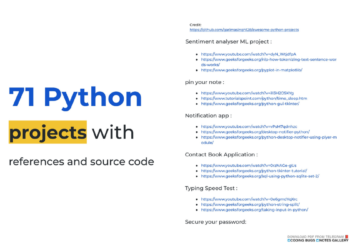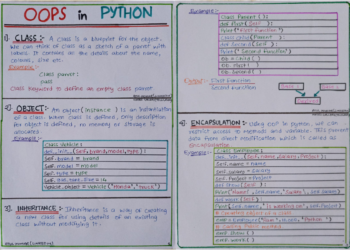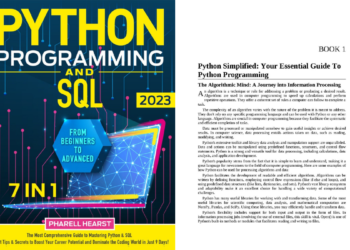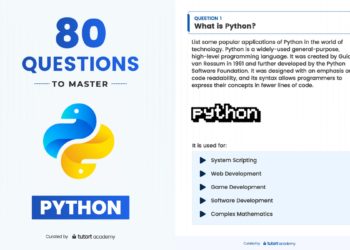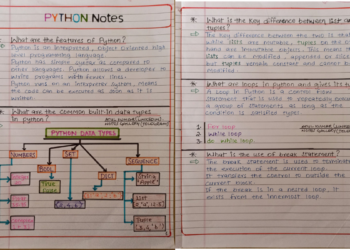Python offers multiple options for developing GUI (Graphical User Interface). Out of all the GUI methods, tkinter is the most commonly used method. It is a standard Python interface to the Tk GUI toolkit shipped with Python. Python Tkinter is the fastest and easiest way to create GUI applications. Creating a GUI using Tkinter is an easy task.
Table of Content
- Create First Tkinter GUI Application
- Tkinter Widget
- Color and Font Option in Tkinter
- Geometry Management
To create a Tkinter Python app, you follow these basic steps:
- Import the tkinter module: This is done just like importing any other module in Python. Note that in Python 2.x, the module is named ‘Tkinter’, while in Python 3.x, it is named ‘tkinter’.
- Create the main window (container): The main window serves as the container for all the GUI elements you’ll add later.
- Add widgets to the main window: You can add any number of widgets like buttons, labels, entry fields, etc., to the main window to design the interface as desired.
- Apply event triggers to the widgets: You can attach event triggers to the widgets to define how they respond to user interactions.
Create First Tkinter GUI Application
There are two main methods used which the user needs to remember while creating the Python application with GUI.
Tk()
To create a main window, tkinter offers a method ‘Tk(screenName=None, baseName=None, className=’Tk’, useTk=1)’. To change the name of the window, you can change the className to the desired one. The basic code used to create the main window of the application is:
mainloop()
There is a method known by the name mainloop() is used when your application is ready to run. mainloop() is an infinite loop used to run the application, wait for an event to occur, and process the event as long as the window is not closed.
Example
Python
import tkinter m = tkinter.Tk() ''' widgets are added here ''' m.mainloop()
Output

Tkinter Widget
There are a number of widgets which you can put in your tkinter application. Some of the major widgets are explained below:
1. Label
It refers to the display box where you can put any text or image which can be updated any time as per the code. The general syntax is:
w=Label(master, option=value) master is the parameter used to represent the parent window.
Python
from tkinter import * root = Tk() w = Label(root, text='GeeksForGeeks.org!') w.pack() root.mainloop()
Output

2. Button
To add a button in your application, this widget is used. The general syntax is:
w=Button(master, option=value)
master is the parameter used to represent the parent window. There are number of options which are used to change the format of the Buttons. Number of options can be passed as parameters separated by commas.
Python
import tkinter as tk
r = tk.Tk()
r.title('Counting Seconds')
button = tk.Button(r, text='Stop', width=25, command=r.destroy)
button.pack()
r.mainloop()Output

3. Entry
It is used to input the single line text entry from the user.. For multi-line text input, Text widget is used. The general syntax is:
w=Entry(master, option=value)
master is the parameter used to represent the parent window. There are number of options which are used to change the format of the widget. Number of options can be passed as parameters separated by commas. Some of them are listed below.
Python
from tkinter import * master = Tk() Label(master, text='First Name').grid(row=0) Label(master, text='Last Name').grid(row=1) e1 = Entry(master) e2 = Entry(master) e1.grid(row=0, column=1) e2.grid(row=1, column=1) mainloop()
Output

4. CheckButton
To select any number of options by displaying a number of options to a user as toggle buttons. The general syntax is:
w = CheckButton(master, option=value)
There are number of options which are used to change the format of this widget. Number of options can be passed as parameters separated by commas. Some of them are listed below.
Python
from tkinter import * master = Tk() var1 = IntVar() Checkbutton(master, text='male', variable=var1).grid(row=0, sticky=W) var2 = IntVar() Checkbutton(master, text='female', variable=var2).grid(row=1, sticky=W) mainloop()
Output

5. RadioButton
It is used to offer multi-choice option to the user. It offers several options to the user and the user has to choose one option. The general syntax is:
w = RadioButton(master, option=value)
There are number of options which are used to change the format of this widget. Number of options can be passed as parameters separated by commas. Some of them are listed below.
Python
from tkinter import * root = Tk() v = IntVar() Radiobutton(root, text='GfG', variable=v, value=1).pack(anchor=W)Radiobutton(root, text='MIT', variable=v, value=2).pack(anchor=W)mainloop()
Output

6. Listbox
It offers a list to the user from which the user can accept any number of options. The general syntax is:
w = Listbox(master, option=value)
master is the parameter used to represent the parent window.
There are number of options which are used to change the format of the widget. Number of options can be passed as parameters separated by commas. Some of them are listed below.
Python
from tkinter import * top = Tk() Lb = Listbox(top) Lb.insert(1, 'Python') Lb.insert(2, 'Java') Lb.insert(3, 'C++') Lb.insert(4, 'Any other') Lb.pack() top.mainloop()
Output

7. Scrollbar
It refers to the slide controller which will be used to implement listed widgets. The general syntax is:
w = Scrollbar(master, option=value)
master is the parameter used to represent the parent window.
There are number of options which are used to change the format of the widget. Number of options can be passed as parameters separated by commas. Some of them are listed below.
Python
from tkinter import * root = Tk() scrollbar = Scrollbar(root) scrollbar.pack(side=RIGHT, fill=Y) mylist = Listbox(root, yscrollcommand=scrollbar.set) for line in range(100):
mylist.insert(END, 'This is line number' + str(line)) mylist.pack(side=LEFT, fill=BOTH) scrollbar.config(command=mylist.yview) mainloop()
Output

8. Menu
It is used to create all kinds of menus used by the application. The general syntax is:
w = Menu(master, option=value)
master is the parameter used to represent the parent window.
There are number of options which are used to change the format of this widget. Number of options can be passed as parameters separated by commas. Some of them are listed below.
Python
from tkinter import * root = Tk() menu = Menu(root) root.config(menu=menu) filemenu = Menu(menu) menu.add_cascade(label='File', menu=filemenu) filemenu.add_command(label='New') filemenu.add_command(label='Open...') filemenu.add_separator() filemenu.add_command(label='Exit', command=root.quit) helpmenu = Menu(menu) menu.add_cascade(label='Help', menu=helpmenu) helpmenu.add_command(label='About') mainloop()
Output

9. Combobox
Combobox widget is created using the ttk.Combobox class from the tkinter.ttk module. The values for the Combobox are specified using the values parameter. The default value is set using the set method. An event handler function on_select is bound to the Combobox using the bind method, which updates a label with the selected item whenever an item is selected.
Python
import tkinter as tk from tkinter import ttk def on_select(event): selected_item = combo_box.get() label.config(text="Selected Item: " + selected_item) root = tk.Tk() root.title("Combobox Example") # Create a label label = tk.Label(root, text="Selected Item: ") label.pack(pady=10) # Create a Combobox widget combo_box = ttk.Combobox(root, values=["Option 1", "Option 2", "Option 3"]) combo_box.pack(pady=5) # Set default value combo_box.set("Option 1") # Bind event to selection combo_box.bind("<<ComboboxSelected>>", on_select) root.mainloop()
Output

10. Scale
It is used to provide a graphical slider that allows to select any value from that scale. The general syntax is:
w = Scale(master, option=value)master is the parameter used to represent the parent window.
There are number of options which are used to change the format of the widget. Number of options can be passed as parameters separated by commas. Some of them are listed below.
Python
from tkinter import * master = Tk() w = Scale(master, from_=0, to=42) w.pack() w = Scale(master, from_=0, to=200, orient=HORIZONTAL) w.pack() mainloop()
Output

11. TopLevel
This widget is directly controlled by the window manager. It don’t need any parent window to work on.The general syntax is:
w = TopLevel(master, option=value)
There are number of options which are used to change the format of the widget. Number of options can be passed as parameters separated by commas. Some of them are listed below.
Python
from tkinter import * root = Tk() root.title('GfG') top = Toplevel() top.title('Python') top.mainloop()
Output

12. Message
It refers to the multi-line and non-editable text. It works same as that of Label. The general syntax is:
w = Message(master, option=value) master is the parameter used to represent the parent window.
There are number of options which are used to change the format of the widget. Number of options can be passed as parameters separated by commas. Some of them are listed below.
Python
from tkinter import * main = Tk() ourMessage = 'This is our Message' messageVar = Message(main, text=ourMessage) messageVar.config(bg='lightgreen') messageVar.pack() main.mainloop()
Output

13. MenuButton
It is a part of top-down menu which stays on the window all the time. Every menubutton has its own functionality. The general syntax is:
w = MenuButton(master, option=value) master is the parameter used to represent the parent window.
There are number of options which are used to change the format of the widget. Number of options can be passed as parameters separated by commas. Some of them are listed below.
Python
from tkinter import * top = Tk() mb = Menubutton ( top, text = "GfG") mb.grid() mb.menu = Menu ( mb, tearoff = 0 ) mb["menu"] = mb.menu cVar = IntVar() aVar = IntVar() mb.menu.add_checkbutton ( label ='Contact', variable = cVar ) mb.menu.add_checkbutton ( label = 'About', variable = aVar ) mb.pack() top.mainloop()
Output

14. Progressbar
Tkinter application with a Progressbar widget and a button to start the progress. When the button is clicked, the progressbar fills up to 100% over a short period, simulating a task that takes time to complete.
Python
import tkinter as tk from tkinter import ttk import time def start_progress():
progress.start()
# Simulate a task that takes time to complete
for i in range(101):
# Simulate some work
time.sleep(0.05)
progress['value'] = i
# Update the GUI
root.update_idletasks()
progress.stop() root = tk.Tk() root.title("Progressbar Example") # Create a progressbar widget progress = ttk.Progressbar(root, orient="horizontal", length=300, mode="determinate") progress.pack(pady=20) # Button to start progress start_button = tk.Button(root, text="Start Progress", command=start_progress) start_button.pack(pady=10) root.mainloop()
Output

15. SpinBox
It is an entry of ‘Entry’ widget. Here, value can be input by selecting a fixed value of numbers.The general syntax is:
w = SpinBox(master, option=value)
There are number of options which are used to change the format of the widget. Number of options can be passed as parameters separated by commas. Some of them are listed below.
Python
from tkinter import * master = Tk() w = Spinbox(master, from_=0, to=10) w.pack() mainloop()
Output:

16. Text
To edit a multi-line text and format the way it has to be displayed. The general syntax is:
w =Text(master, option=value)
There are number of options which are used to change the format of the text. Number of options can be passed as parameters separated by commas. Some of them are listed below.
Python
from tkinter import * root = Tk() T = Text(root, height=2, width=30) T.pack() T.insert(END, 'GeeksforGeeks\nBEST WEBSITE\n') mainloop()
Output

17. Canvas
It is used to draw pictures and other complex layout like graphics, text and widgets. The general syntax is:
w = Canvas(master, option=value) master is the parameter used to represent the parent window.
There are number of options which are used to change the format of the widget. Number of options can be passed as parameters separated by commas. Some of them are listed below.
Python
from tkinter import * master = Tk() w = Canvas(master, width=40, height=60) w.pack() canvas_height=20 canvas_width=200 y = int(canvas_height / 2) w.create_line(0, y, canvas_width, y ) mainloop()
Output

18. PannedWindow
It is a container widget which is used to handle number of panes arranged in it. The general syntax is:
w = PannedWindow(master, option=value)
Master is the parameter used to represent the parent window. There are number of options which are used to change the format of the widget. Number of options can be passed as parameters separated by commas. Some of them are listed below.
Python
from tkinter import * m1 = PanedWindow() m1.pack(fill=BOTH, expand=1) left = Entry(m1, bd=5) m1.add(left) m2 = PanedWindow(m1, orient=VERTICAL) m1.add(m2) top = Scale(m2, orient=HORIZONTAL) m2.add(top) mainloop()
Output

Color Option in Tkinter
This example demonstrates the usage of various color options in Tkinter widgets, including active background and foreground colors, background and foreground colors, disabled state colors, and selection colors. Each widget in the example showcases a different color option, providing a visual representation of how these options affect the appearance of the widgets.
Python
import tkinter as tk root = tk.Tk() root.title("Color Options in Tkinter") # Create a button with active background and foreground colors button = tk.Button(root, text="Click Me", activebackground="blue", activeforeground="white") button.pack() # Create a label with background and foreground colors label = tk.Label(root, text="Hello, Tkinter!", bg="lightgray", fg="black") label.pack() # Create an Entry widget with selection colors entry = tk.Entry(root, selectbackground="lightblue", selectforeground="black") entry.pack() root.mainloop()
Output

Geometry Management
Tkinter also offers access to the geometric configuration of the widgets which can organize the widgets in the parent windows. There are mainly three geometry manager classes class.
pack() method
It organizes the widgets in blocks before placing in the parent widget.
Python
import tkinter as tk root = tk.Tk() root.title("Pack Example") # Create three buttons button1 = tk.Button(root, text="Button 1") button2 = tk.Button(root, text="Button 2") button3 = tk.Button(root, text="Button 3") # Pack the buttons vertically button1.pack() button2.pack() button3.pack() root.mainloop()
Output

grid() method
It organizes the widgets in grid (table-like structure) before placing in the parent widget.
Python
import tkinter as tk root = tk.Tk() root.title("Grid Example") # Create three labels label1 = tk.Label(root, text="Label 1") label2 = tk.Label(root, text="Label 2") label3 = tk.Label(root, text="Label 3") # Grid the labels in a 2x2 grid label1.grid(row=0, column=0) label2.grid(row=0, column=1) label3.grid(row=1, column=0, columnspan=2) root.mainloop()
Output

place() method
It organizes the widgets by placing them on specific positions directed by the programmer.
Python
import tkinter as tk root = tk.Tk() root.title("Place Example") # Create a label label = tk.Label(root, text="Label") # Place the label at specific coordinates label.place(x=50, y=50) root.mainloop()
Output

Frequently Asked Questions on Python Tkinter – FAQs
What is Tkinter in Python used for?
Tkinter is a built-in library in Python for creating graphical user interfaces (GUIs). You can use it to design desktop applications with familiar elements like buttons, windows, menus, and more. It allows you to build interactive programs that users can navigate visually.
What does TK() mean in Python?
In Python,
Tk()is a function call from thetkintermodule, which is the standard interface to the Tk GUI toolkit. CallingTk()initializes a new Tkinter application, creating the main window where all the GUI components (widgets) will be placed.
Is Tkinter the only GUI for Python?
No, Tkinter is not the only GUI library for Python. There are other options like PyQt, Kivy, wxPython, and GTK+.
What is a Tkinter window in Python?
A Tkinter window is the main graphical element, representing a single on-screen window that can contain other UI elements.
Which GUI is best for Python?
There’s no single “best” GUI. The best choice depends on your needs and preferences. However, here’s a list of GUIs in Python:
- Tkinter
- PyQt
- wxPython
- Kivy
- PySide
- Dear PyGui



